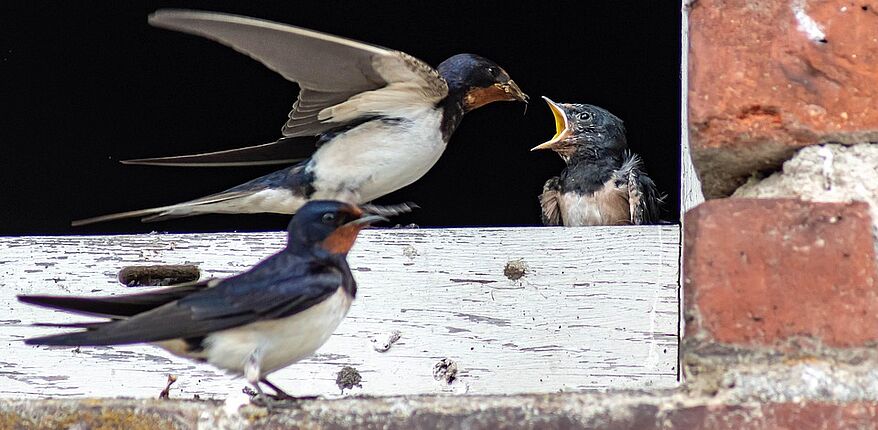In the past, swallows, for example, were seen as messengers of good luck, protecting the house from damage and the livestock in the barn from disease. Today, farms and agricultural businesses, for example, are subject to stricter hygiene regulations and have therefore closed off all entry points. The breeding sites of the species described are mainly found on house walls, window corners, roof overhangs, interior beams, crevices, roof tiles or other cavities in buildings. The energy refurbishment of residential and commercial buildings and the increasingly hostile attitude of people (due to droppings, food scraps, noise, etc.) also lead to the loss of nesting opportunities. Bird defence measures such as spikes, fluttering tape, extra-smooth façade paints or knocking down nests prevent breeding.
All European bird species are at least specially protected under the Federal Nature Conservation Act. The bat species found in Germany are all also strictly protected. According to Section 44 of the Federal Nature Conservation Act, it is prohibited to remove, damage or destroy the breeding or resting places of these species. As they are visited again every year during the breeding season, the nesting sites do not lose their protected status, even if they are not used by the animals in winter, for example.
The protection therefore exists all year round and the habitats may not be removed in the winter months without a corresponding licence including a specified replacement. Violations of this can be penalised with heavy fines or lead to construction being halted.
During the breeding season, existing breeding sites must not be blocked by nets, sheeting, scaffolding or similar. Restoration measures should therefore primarily be carried out between September and March.
In any case, the Lower Nature Conservation Authority of the Börde district must be contacted via naturschutz-forsten(at)landkreis-boerde.de at an early stage and regardless of the season for all measures (e.g. renovation and remodelling work) that affect or destroy the breeding and resting places of protected species.
